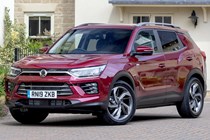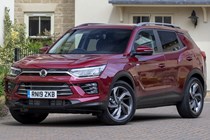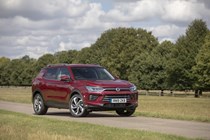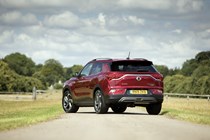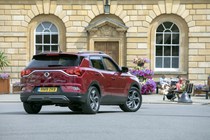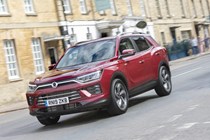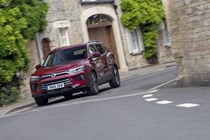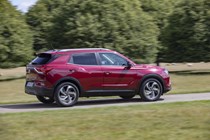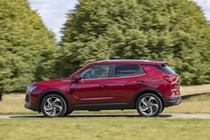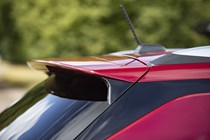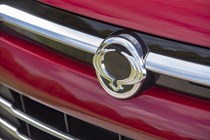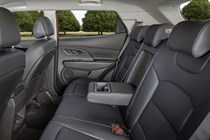
SsangYong Korando SUV (2019-2024) interior, tech and comfort

- Well-built, if less plush than rivals
- High levels of standard equipment
- Digital dials feel gimmicky
The Korando’s interior is, for the most part, a model of common sense. Compared with the previous model, it’s night and day – controls are largely where you’d expect them, with big, chunky and well-labelled buttons throughout.
Depending on which trim level you opt for, there are two touchscreen infotainment systems available. Both support Apple CarPlay and Android Auto connectivity, which is great – even premium manufacturers such as BMW can’t quite figure out both of them. The larger system is also fitted with a TomTom sat-nav system, which works well and serves up clear instructions.

The design of the dashboard is also a big improvement over previous SsangYong models. With chrome highlights, a flat-faced centre console integrating the infotainment screen smoothly and rather neatly-designed air vents.
There is, however, a definite step down in terms of how the interior feels if you compare it to rivals such as the Skoda Karoq and Kia Sportage. There’s no issue with the build quality – after all, SsangYong warrants these cars for seven years, so you’d hope for everything to be solidly screwed together. Rather, it’s that last level of polish, the density of the materials or the feel of switches. A Sportage feels more substantial.
Digital dials on top-spec cars
New for the Korando – and indeed any SsangYong so far – is the addition of a Virtual Cockpit-style digital dashboard. It’s a screen of 10.25-inches diagonally (exactly the same as Audi’s own Virtual Cockpit) and features a choice of several different layouts giving star billing to items such as the navigation, the safety aids or simply a big speedometer.
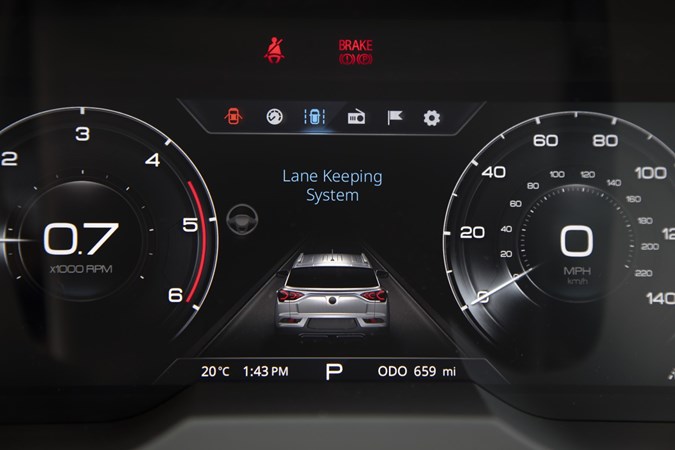
It’s a step behind the Volkswagen Group particularly when it comes to slickness, though, with labyrinthine menus and rather too many configurable options for comfort.
High-end equipment
There are several items on the spec sheet that look as though they shouldn’t necessarily belong on a budget SUV. Along with the aforementioned infotainment screens and digital dials, top-spec Ultimate cars also get full LED lights, 19-inch alloy wheels, heated and cooled front seats and full leather upholstery.
Even lower trim levels come with plenty to get excited about – 17-inch alloys, cruise control, DAB radio, auto lights and a full set of safety equipment are standard across the range, but it’s worth bearing in mind that all but top-spec Ultimate trim are limited to a single engine. ELX and Ventura cars are exclusively petrol with manual gearbox and front-wheel drive, while the Pioneer is aimed at the towing market and is diesel, automatic only – albeit with a choice of two or four-wheel drive. It’s only the Ultimate that gives a choice of petrol manual, petrol auto or diesel auto.
Comfort
- Ride can be slightly harsh on bigger wheels
- High-speed ride decent
- Refinement at low speeds not the most impressive
The Korando’s ride is quite firm for a car of this nature, clattering over lumps and bumps in the road – made worse by the large, 19-inch alloy wheels on top-spec Ultimate models. A Hyundai Tucson is certainly more comfortable, especially over rutted surfaces.
The SsangYong’s seats also lack a bit of lateral support – they’re quite wide and flat, comfortable on a run but you’ll be sliding about a bit in fast corners. As far as refinement goes, we’ll be interested to see how the petrol engine fares – the diesel doesn’t do a particularly good job. It has a rough, loud and metallic edge when pulling away, and though it does settle down at high speeds you’ll likely need to rev it quite a bit to keep up with traffic – the Korando is not a fast car.


